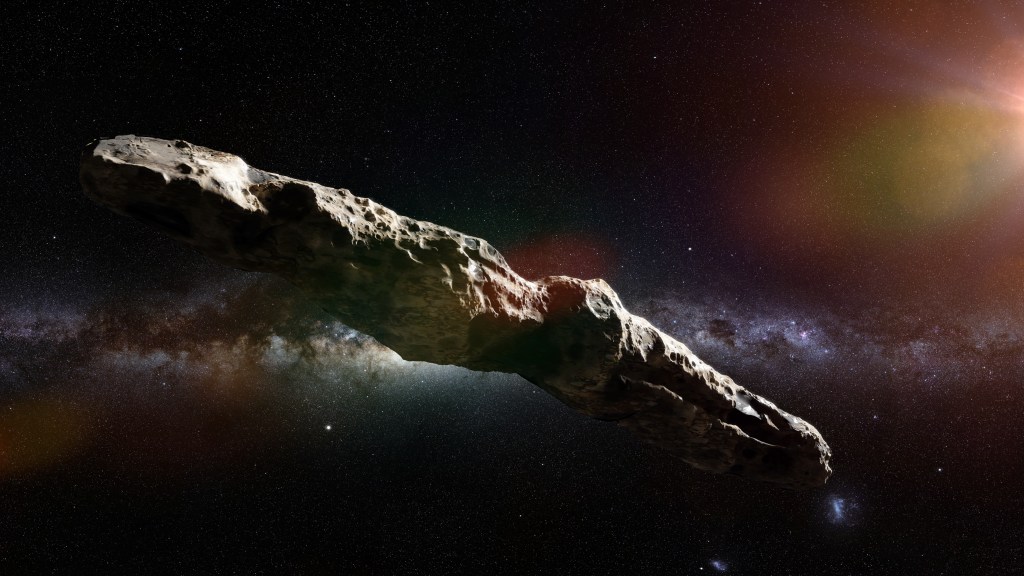Without scientific instruments or knowledge to tell them otherwise, you can forgive ancient humans for initially believing the Earth was flat. After all, from a human perspective, the world does appear to stretch out before us without suddenly sloping down like a half-pipe. But while this notion has been thoroughly disproven for centuries, a new kind of flat-versus-curved debate has recently captured academic imagination. And this time, scientists are debating the very shape of the universe itself.
In a paper recently published on the arXiv preprint server, a team of astrophysicists and cosmologists from Ulm University and the University of Lyon have studied the leftover light from the Big Bang—known as the Cosmic Microwave Background, or CMB—and determined that the universe may not be a flat plane, as many scientists currently believe.
Videos by VICE
“The example in our paper is… a donut shaped universe model,” explained Thomas Buchert, a professor of cosmology at the University of Lyon and coauthor on the new paper, in an email. This shape is also known as a three-torus, Buchert wrote, AKA a three-dimensional donut. The idea that the universe has a torus shape is at the center of some pretty far-out stuff, such as the CIA’s 1980s Gateway report on psychic phenomena.
This paper has not yet been peer-reviewed, but Buchert said it has been submitted to journals for consideration.
Buchert and colleagues are not the first to propose an oddly shaped universe. The idea of a torus shape originated in the 1980s, and new data reinvigorated discussions among researchers in 2003. But in the last 18 years scientists have broadly come to a different conclusion about the universe’s shape. Namely, they believe it to be geometrically flat—meaning parallel lines in the fabric of spacetime remain parallel—and infinitely expanding. This last tenet is evidenced by observed redshifts, a signal from light that it’s retreating, at the edge of the universe.
This idea that the universe’s shape is essentially an infinite sheet of flat paper would seem like the end of the story, but Buchert and colleagues write in their paper that there was something in the CMB that didn’t quite line up.
“The [CMB] spectrum is not only discrete but has in addition large gaps,” they write. Which creates “intriguing discrepancies between predictions of the [standard model] and CMB observations.”
In other words, there appear to be signals missing from the CMB that would be present if the universe were truly infinite as the standard model proposes. One explanation for this would be that the universe is actually “multiply connected,” at these missing points, meaning that its topology is curved in such a way that it connects back onto itself like a donut.
The same way you can fold a flat piece of paper into a curved shape without changing its parallel properties, this solution would mean the universe could be both flat and donut shaped. Through simulations of the CMB, this is exactly what the researchers found. However, if proven to be true, this would mean that the universe was no longer infinite, said Buchert, which may be philosophically jarring to some.
“Finite universe models might be scary to some people, but you do not experience a boundary,” said Buchert. “So you live in an unbounded Universe although it has finite volume.”
But even if you won’t necessarily bonk into the edge of this finite universe, can you sail around it and end up back where you started? Theoretically, yes.
“Light can travel around the whole finite Universe, but for a space-traveler it’ll be difficult,” said Buchert. “Certainly, if future technologies would allow to create wormholes in spacetime, or if we would realize [warp drives that are] not limited by the speed of light, then it is in principle possible to travel around.”
But even if you could hop onboard a warp-speed spacecraft, it might have some unintended consequences, warns Buchert.
“It is expected that your proper time within the warp bubble is considerably shorter than the time elapsed at Earth where you started from,” he said. “If you would complete the loop and come back, Earth might no longer exist.”
While they wait for new warp craft to be developed, Buchert and colleagues will instead continue probing this mystery the old fashion way: analyzing data from probes like Planck, WMAP and COBE to uncover hidden clues at the birth of the universe.




